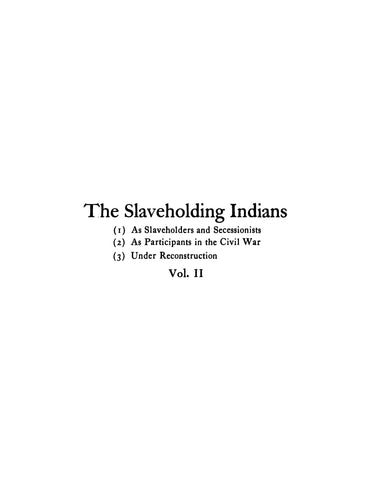
SLAVEHOLDING INDIANS: The Slaveholding Indians: As Slaveholders and Secessionists, as Participants in the Civil War, Under Reconstruction, Volume 2
1919. 403p. by Annie Heloise Abel.
A company is forming to fight against Indians, while some Indians express their loyalty to the U.S. Government. Major General Robt B. Mitchell has resigned to raise volunteers against the Indians, which raises concerns about the current policy amidst threats from Missouri. This situation highlights the complexities of military and political dynamics during the Civil War, particularly regarding the treatment of Native American allies.
General Lane is actively seeking to protect Union-aligned Indians and has proposed immediate action to support them. His brigade is engaged in securing enlistment from these Indians and is moving independently in Missouri to address the urgent needs of those who wish to fight for the Union. This proactive approach underscores the importance of maintaining alliances with Native American tribes during a time of conflict.
Political tensions are evident regarding military leadership and the handling of Indian affairs during the Civil War. The actions and decisions made by military leaders like General Lane reflect the broader struggle to navigate the relationships between the U.S. Government, its military forces, and Native American tribes. As the situation evolves, the need for clear communication and strategic support for Union-aligned Indians becomes increasingly critical.
